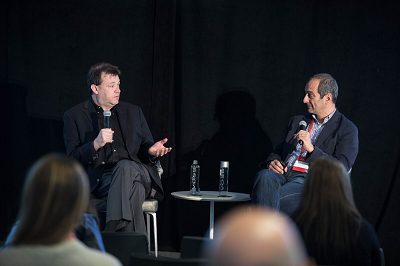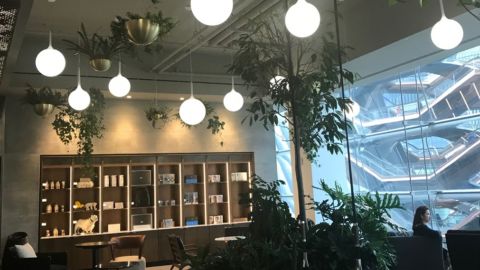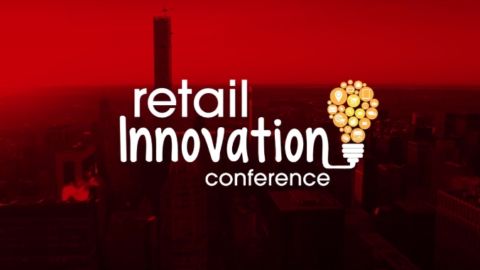Separating what’s truly innovative from what’s merely interesting is one of the biggest challenges in retail. Then there’s another crucial step: identifying technologies that are not only innovative but will actually enhance operational efficiency, the customer experience, or (hopefully) both.
At the 2017 Retail Innovation Conference, attendees were lucky enough to hear from two people who are uniquely qualified to make just these kinds of judgments: Scott Emmons, Head of the Innovation Lab for Neiman Marcus, and Pano Anthos, Managing Director of the innovation incubator XRC Labs. In a freewheeling dialogue, Emmons and Anthos gave their unvarnished opinions about the pros, cons and practical applications of a number of up-and-coming technologies, including:
• Visual search functionalities;
• Use of AI to translate natural language questions into specific database queries;
• VR and AR;
• Self-powered pop-up shops; and
• The retail store’s new role as a manufacturing plant.
Visual Search Comes Into Focus
The ability to search a web site or other database via visual images rather than text descriptions (e.g. “a blue mid-line dress”) already is being used by social channels such as Pinterest, and the retail applications are significant. “We’ve had the ‘Snap Find Shop’ feature, that allows you to match a picture you’ve taken with a product, for several years,” said Emmons. “It came out of our Innovation Lab at Neiman Marcus. It works as advertised — it’s Shazam for shopping — and the results it brings back are very good and very relevant.”
Adoption has been an issue, not because the technology doesn’t work well but because it’s not the way consumers are accustomed to finding items. “We might be too early to the game, or maybe the way our UI works isn’t quite right,” said Emmons. “We’re still twiddling with it and the tech is still evolving.”
Anthos is a “big believer in visual search,” noting that the biggest challenge remaining is multi-item detection: the ability to zero in on just one or two elements of an entire outfit from a picture. “The customer might only care about the pants, but that’s not how people take a picture,” said Anthos. “We would want to make the process so ‘brain dead’ simple that it would work on a web site, a mobile app, really anything.”
Using Natural Language And Text-Based Chat To Query Databases
Most of the buzz around AI-powered chatbots has been for customer-facing applications, but Anthos believes their biggest impact will come from internal applications. “Being able to text chat to your own data is the next wave of user interfaces,” he said. “AI will interpret your English-language question and convert it to data queries, to get you the answer to your questions: Can you tell me what sales were this year? How many red sneakers did we sell yesterday? When the user can communicate naturally and normally, whether it’s a customer in your store or a ‘customer’ within a retail enterprise, that gets to be really, really interesting.”
AR, VR And ‘Darth Vader’
Both Emmons and Anthos are skeptical that the current iteration of virtual reality (VR), with its oversize goggles, is ready for many practical applications. “We’re still in the experimentation phase, but it’s not likely that core Neiman Marcus customers will strap on VR goggles,” said Emmons. “Maybe when the technology is like putting on a pair of eyeglasses, we may have something. But as long as you continue to look like Darth Vader, probably not. We want to do some low-cost experiments with it, because when the tech is ready, we don’t want the train to pass us by, but augmented reality (AR) is much more interesting to us in the near term.”
Anthos believes AR’s biggest application will be to bring ratings-and-reviews functionality into the store environment: “E-Commerce has advanced our ability to learn about products, but then customers walk into a store and we’re blind as bats,” he noted. “We don’t know if the product stinks or falls apart in five minutes, or anything about where it comes from. Everyone online looks at ratings and reviews, so why not in the store? AR provides the first wave of that potential by having the digitization of ratings and reviews dropped onto your phone.”
Pop-Up Stores: Mobile ‘Labs’ For Retail Experimentation
The ability to bring stores to where customers are, rather than making them come to established brick-and-mortar locations, appeals to both Emmons and Anthos. The latter described a six-foot by six-foot pop-up containing two dressing rooms that produces revenues of $10,000 per square foot. “It’s self-powered and can go up in 22 minutes,” said Anthos. “It was designed by an architect, not a retailer, and it can be placed in a park or really anywhere. There’s no inventory, everything is drop shipped, and customers are very happy about that — they’re in a park and don’t want to carry anything away with them. The ability to move stores to the customer is a major part of the movement in how stores reinvent themselves.”
These types of pop-ups “give the opportunity for experimentation, even for the big department store behemoth that we are,” said Emmons. “All the cutting-edge technology, from video analytics and beacons, is already baked in, which would allow us to measure engagement and improve the ROI even further.”
In-Store Manufacturing: The Ultimate In Personalization?
3D printers capable of producing wearable garments are already available, with brands including Helmut Lang, Theory and Uniqlo using them. “It produces a garment in 35 minutes with no waste, and it’s silent,” said Anthos. “It’s not cheap — it costs about $150,000 per machine — but when you’re talking about sustainability and localized production, this allows a brand to use the specific yarn that comes from a small farm in Austria, from sheep that have been shepherded by local orphans.”
While the current cost factor means applications for such printers are currently limited, “the concept fits into the desire for personalization and experiential retail,” said Emmons. “I think there’s a play in bespoke, on-demand items, but first it’s about personalizing the customer experience.”
You can view the complete video of the Anthos and Emmons session, and videos of other Retail Innovation Conference presentations here.













